THE novelist Owen Hannay wrote: "I was born in Belfast and brought up to believe that, like St. Paul, I am a citizen of no mean city."
Dark, dramatic, rollicking Belfast remains today, no mean city.
Despite a past for which the kindest word would be ‘eventful’, today it’s a friendly, welcoming place.
Indeed, the red-in-tooth violence once associated with Belfast today is all on the small screen, confined to the warring factions within Game of Thrones — an episode of which, it is said, is being broadcast somewhere in the world every minute of the day.
Belfast is home to this, the most successful TV series ever made.
The mediaeval fantasy was extensively filmed in a corner of the former Harland and Wolff shipyards as well as at locations round Northern Ireland.
G-of-T tours depart from outside the Belfast Visitor Centre (9 Donegall Square North, 028 9024 6609).
Meanwhile the Game of Thrones Studio Tour is based in Banbridge, around 25 miles south of Belfast.
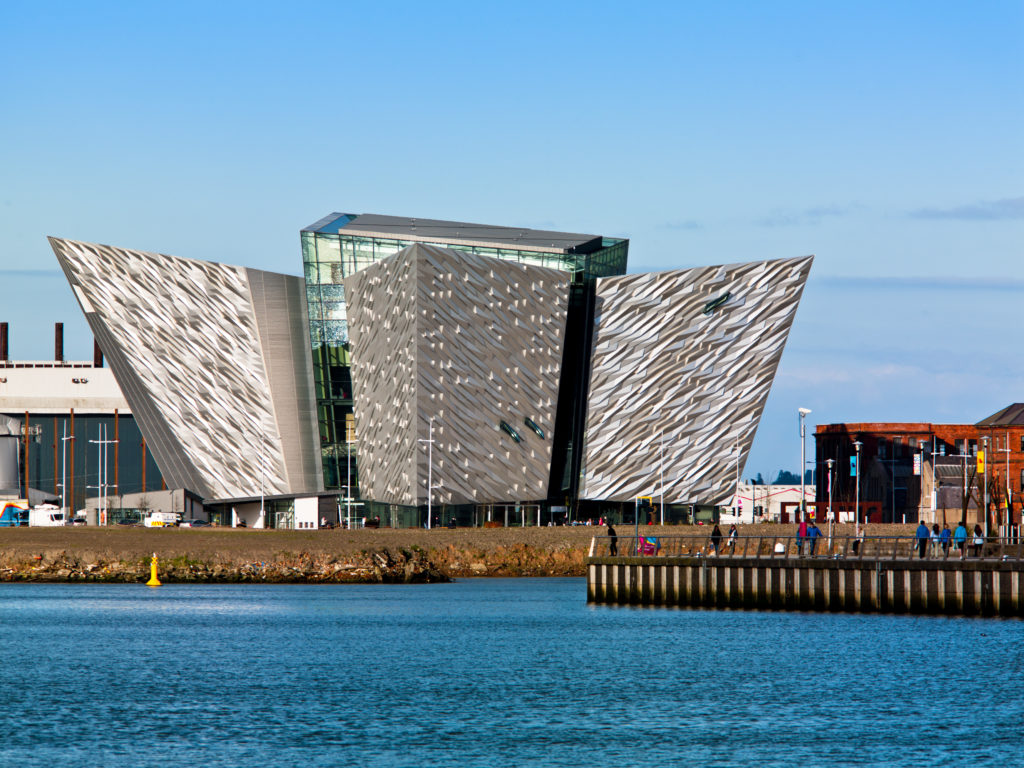 The Titanic Belfast is a must-see attraction
The Titanic Belfast is a must-see attractionBut of course it’s not all just tall tales. Belfast is the scene of much real-life drama, not least the RMS Titanic.
For more information on the world’s most famous ship since Noah’s Ark, head for Titanic Belfast.
In a city where architectural extravagance is scarce, this building truly stands out. Opened in 2012, it stands in the shadow of the Harland and Wolff shipyard cranes.
The museum is composed of nine interactive galleries that explore the history of the Titanic, from its conception, design and construction in Belfast to its appointment with fate 1912.
The exhibition covers broader themes of maritime history, shipbuilding, and the people involved in Titanic’s story — including engineers, crew and passengers, some of whom were emigrants seeking a better life in the New World.
Visitors can explore the sights, sounds, and even smells of the shipyard, with multimedia displays and recreations of key areas like the ship’s grand staircase.
The Ulster Museum in the University Quarter also has a comprehensive lowdown on the most famous ship since Noah’s Ark, as does the Ulster Transport Museum in Cultra, just outside Belfast.
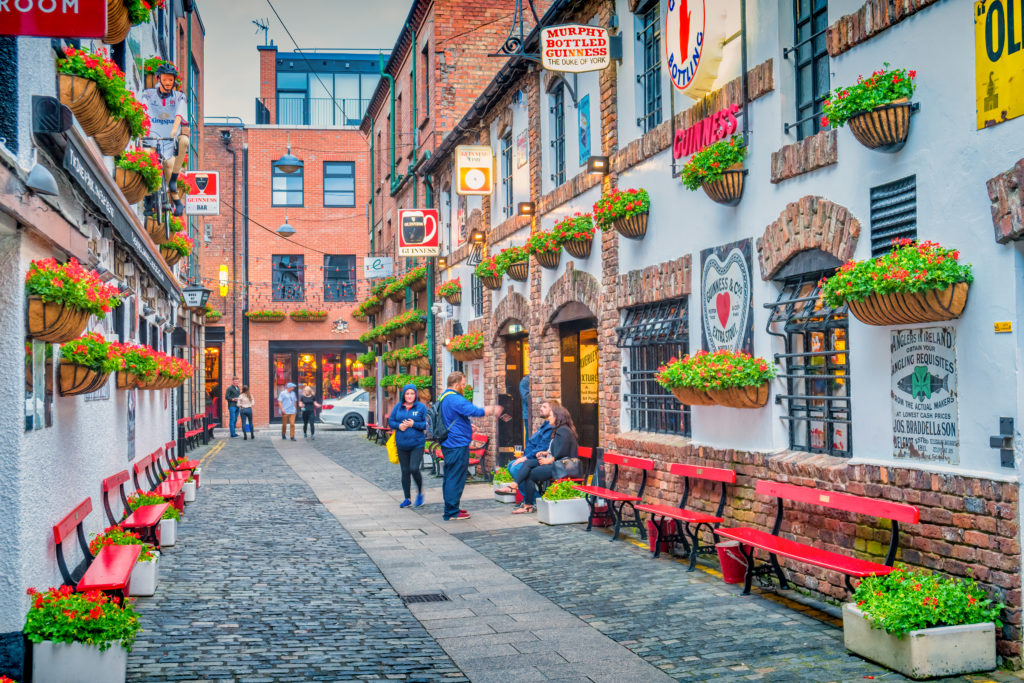 There are plety of great restaurants and bars to choose from in Belfast
There are plety of great restaurants and bars to choose from in BelfastThe restaurants
Some years ago restaurant critic Clement Freud, on a trip to Belfast, was much taken by a sign in a pub reading: "Pint, pie and a kind word – a fiver."
Clement was duly served an immaculate pint of stout and a serviceable enough looking meat pie; but the chat didn't seem too forthcoming. "Hey! What about the kind word?” he enquired. The barman came back, leaned over the bar, and conspiratorially whispered, in a strong Belfast accent: "If I were yew, my friend, I wouldnae bother eatin' the pie."
A very unlikely scenario today. Belfast, like the rest of Ireland, has undergone something of a culinary revolution.
The city’s top tables include:
The Muddler’s Club
The Michelin-starred Muddler’s Club, tucked away on Waring Street in the Cathedral Quarter, is a buzzy restaurant in Belfast’s oldest area. The kitchen area is in full view of the diners, with the staff calm and relaxed.
If your experience of kitchens is culled from the tv series Boiling Point or the comparable US series The Bear, The Muddler’s will come as something of a surprise. It seems that the kitchen staff don’t have to swear and shout, “Oui chef, non chef, and please don’t hit me with that leg of mutton, chef”, in order to produce cutting edge, mouth-watering cuisine.
The wait staff are friendly and knowledgeable to a fault. My server, a French woman had information (and language skills) that could have qualified her for a job at the UN.
At one point she confided in me that the Russian for ‘parsnip’ is ‘pasternak’. That’s right, he was Boris Parsnip. She also told me that Catherine of Aragon, Henry VIII’s first wife, brought the Spanish fashion of eating salads with the main meal to England. Who knew, eh?
The wait staff in general are a hugely talented bunch, chatty certainly, but not intrusive (that’s a hard trick to get right) who will guide you through a seasonal tasting menu where you’ll encounter dishes such Wicklow venison with parsnip (yes) and chestnuts, or white onion soup with smoked haddock and curry oil.
Ox
The seasonal plant-led menu at the Michelin-starred Ox pivots on the weekly changing larder. In autumn expect local Ballywalter fig leaves, preserved for use throughout autumn and winter, alongside autumn truffles and ceps, squashes and pumpkins, nuts and wild game. Tasting menus change with the seasons.
Hadskis
Situated in the Cathedral Quarter, Hadskis specialises in European and modern British cuisine. The bistro-style restaurant is known for its fresh seafood and daily specials.
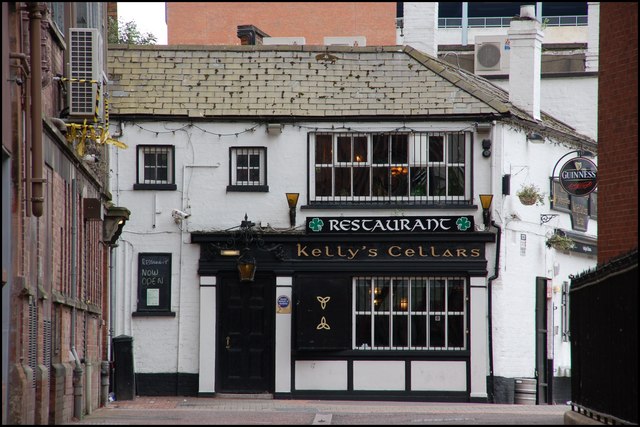 Enjoy a tipple at Kelly's Cellars
Enjoy a tipple at Kelly's CellarsBelfast’s pubs
White's is Belfast’s oldest pub (one of several, as it happens).
Yet when the barman tells you they received their first liquor licence in 1630, “the year before work on the Taj Mahal began”, you’re inclined to believe him.
Kelly’s Cellars, like White’s, is one of Belfast’s oldest pubs, a frequent meeting place for the United Irishmen in the run-up to the 1798 rebellion.
As a not-qualified-at-all historian, I think I’m right in saying that Henry Joy, on the lam from English soldiers, hid behind the bar in this very establishment.
The pub was founded in 1720 — and 300 years after opening for business Kelly's manages to be a cross between everyman drinking pub, political meeting place and historic museum.
Traditional music at the weekend too — Belfast is an epicentre of exceptional seisúns. This is the ideal place to meet Belfast people — even if you aren’t planning a rebellion.
The John Hewitt Bar is a handsome, convivial boozer opened in 1999 — and owned and run by the Belfast Unemployed Resource Centre.
It is in every way a "traditional" pub, all solid dark wood and apparent period detail. The bar itself is a grand, polished, glinting shrine. Naturally, there are no gimmicks.
The menu is populist – fishcakes, a smoked salmon salad, steak baguette, pasta – but founded on sound local ingredients and delivered by a kitchen that can clearly cook.
The John Hewitt carries beers from Lisburn's Hilden Brewery.
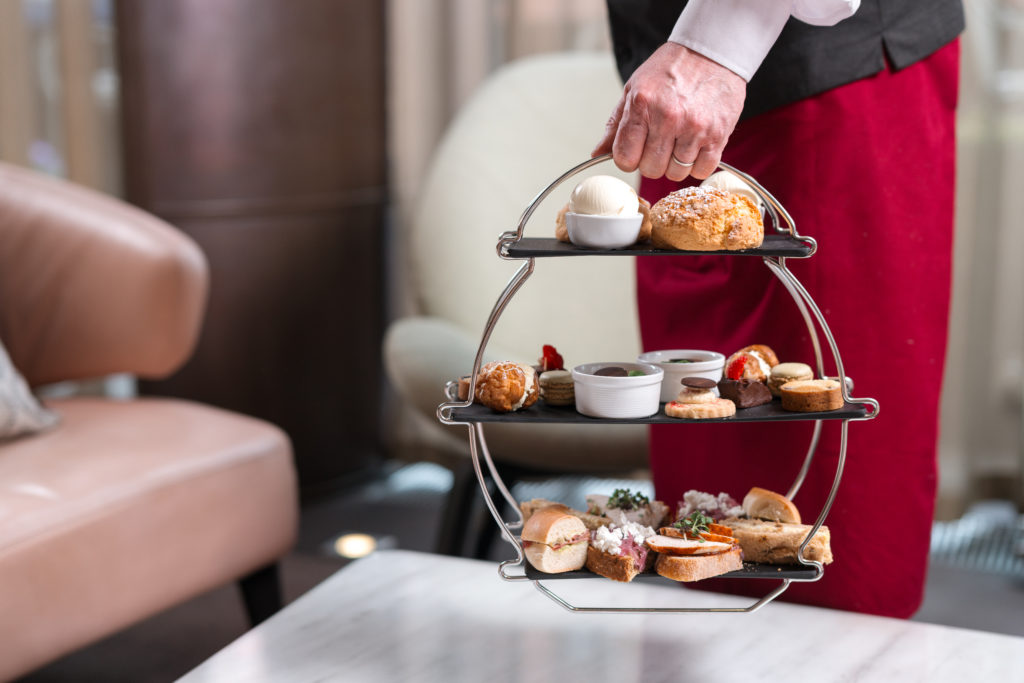 Afternoon Tea is a popular option at the Fitzwilliam Hotel
Afternoon Tea is a popular option at the Fitzwilliam HotelThe hotels
The Fitzwilliam
The five star Fitzwilliam Hotel is bang in the middle of Belfast.
Within a few minutes stands the City Hall, the Linen Hall Library and the Ulster Hall.
All three are of absorbing interest, although the latter has a footnote in rock history: this is where Stairway to Heaven had its first live performance.
On March 5, 1971 — at the height of the Troubles, and with civil disturbance, violence and mayhem a daily occurrence in Belfast — Led Zeppelin appeared at the Ulster Hall
It would be hard to conjure up a more unlikely setting at a more unlikely time to unveil what most people regard as one of the greatest rock songs of all time.
Fast forward fifty years and back to the Fitzwilliam: the cocktail bar is a cosy space with intimate snugs seemingly designed for getting up to no good, maybe listening to the Zeppelins.
The cocktails are a good mix in more ways than one. The traditional favourites are there — mojito, Singapore sling, Margarita, as well as some fine show-off concoctions.
I went for what was called The Prestige: Jack Daniels Tennessee rye whiskey, Angostura bitters, maple syrup. Strong? It would have kick-started a dodo.
www.hotelsone.com/belfast-hotels-gb
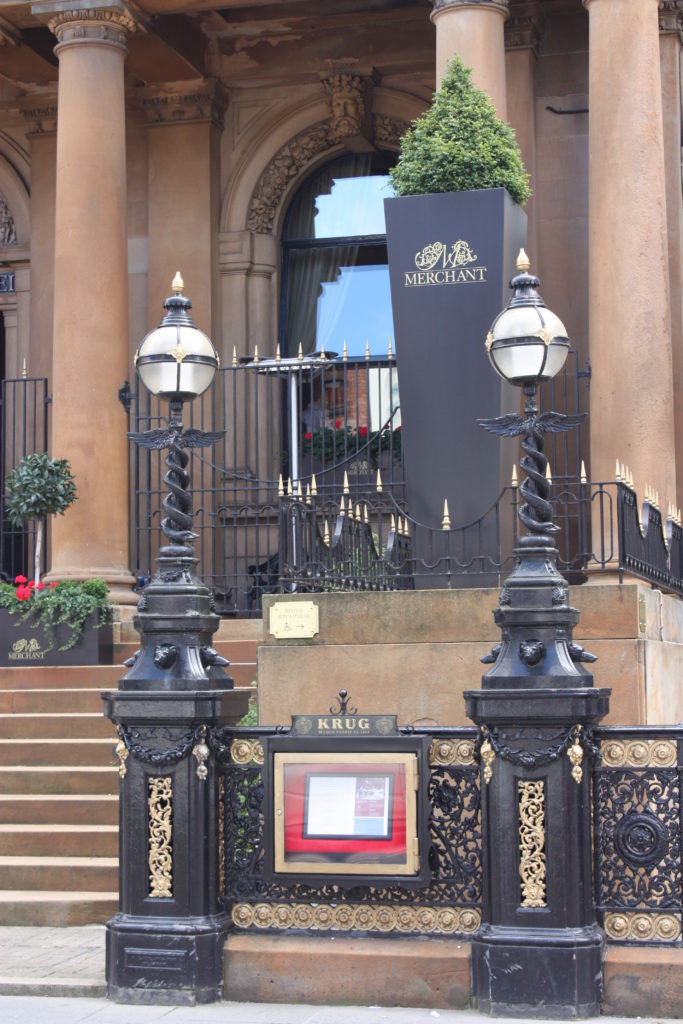 The Merchant Hotel is at the site of the former Ulster Bank headquarters
The Merchant Hotel is at the site of the former Ulster Bank headquartersThe Merchant
The Merchant Hotel, Belfast’s most luxurious hotel, is situated in the former Ulster Bank HQ, and remains a stylish way to max out your credit card.
In the centre of the Cathedral Quarter nightlife, it serves fantastic food. The bank’s former safe is now a snooker room.
Go to jail after passing go
At one time, the majority of people entering Belfast’s main prison had one thought — getting out of there as soon as possible, and using any means at hand.
Now you can have a tour of the decommissioned HM Prison Belfast — aka Crumlin Road Gaol — enjoy a meal at the niftily named Cuffs, or have a dram at the Crum, courtesy of JJ McConnell’s Distillery in the old A-Wing.
Known by inmates, judiciary and security forces alike as the Crum, this Victorian-era prison closed for ordinary business in 1996.
But during its century-and-a-half of service, it was a busy place, housing rebels, political prisoners and what became known by the prison service as ODCs (Ordinary Decent Criminals).
Built during the Great Famine times, the Crum has housed over 25,000 inmates, including high profile inmates such as Éamon de Valera, Martin McGuinness, Michael Stone and Bobby Sands.
Today’s visitor experience includes a look at the gallows and the condemned cell: the site of the last judicial hanging on the island of Ireland, in 1961.
The official hangman was Harry Allen, who — as you will hear during the tour — always wore a bow-tie during executions as a sign of respect. Whether this was a comfort to the condemned men (no women were ever executed here) it’s hard to say. My best guess is that it wasn’t.
The gaol has a reputation for being a “paranormally active location” in other words it’s very haunted. Visitors hear voices calling for aid, doors slamming shut without reason, shadowy figures howling in anguish. Needless to say, the sound of clanking chains are regularly heard, even though manacles were never used in the prison.
The Crumlin Road Gaol Paranormal tour will take you to the various spots of the gaol where paranormal activity has been reported and the guide will tell you off the harrowing stories associated with these areas. Just mind how you go.
The prison restaurant
Cuffs is open for lunch and dinner, serving top class notch, a world removed from the food given to inmates during its previous incarnation.
Locally sourced ingredients are used in dishes that range from hearty traditional Irish fare to international flavours. Don’t ask for porridge. They’ve heard that one
The Distillery
JJ McConnell’s whiskey distillery and bar in the old A-Wing of Crumlin Gaol will give you the whole lowdown in whiskey — and they know what they’re talking about: the brand began in Belfast in 1776. You’ll learn about the distilling process and of course, taste a spot of the cratur along the way;
A tour of the premises gives you some hints on decoding the magic formula of whiskey, and some of the secrets that make Irish whiskey the best in the world. Irish whiskey is triple distilled. The triple distilled tipple - try to say that after a double — has a smoother taste, INMO, than Scotch or American ryes.
McConnell’s Distillery has an all-day café, plus a fully licensed bar to enjoy after the tour.
You can even host your own event here; I imagine organising a do in a distillery is on a par with curating a night of inebriation at a brewery. So, good luck!
For further information about the city visit www.visitbelfast.com or www.Ireland.com

